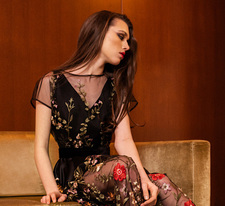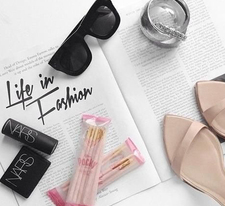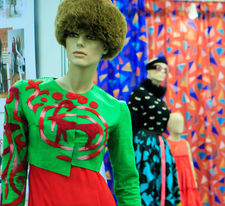Membrane materials for fashion collections
part 1 part 2
There are no universal solutions for all occasions. It is advisable to consult with the manufacturer before purchasing the material. When choosing a membrane cloth for production purposes, first of all it is necessary to understand the purpose of the product. If this product is insulated with a lining and will be used in urban conditions in the middle lane, for an optimal combination of price and quality, a high-quality breathable coating will be a good option. If the product is intended for northern latitudes or a person will move a lot in it (for example, children's clothes for walking), it is better to use a material with a hydrophobic laminated membrane.
To clarify what the quality of membrane materials is, let's turn to the experience of Adventum Technologies. For high-quality performance of high-tech processes that are used in the production of membranes, very careful compliance with a variety of technological parameters and temperature conditions is required. The fact is that if the membrane film is incorrectly connected to the base, the breathable properties of the membrane can be significantly degraded. The connection takes place with the help of a special hot glue, which, getting on the film, closes the pores and makes this area vapor-proof, violating the breathable properties. If the membrane is connected to the base by applying glue in a continuous layer, even the thinnest, then the breathable properties of such a material will tend to zero. The glue will fill all the pores and will not allow the steam to pass through the film. It is possible to achieve the preservation of vapor permeability if glue is applied to the membrane with tiny discrete points. Thus, most of the membrane web will be free of glue. To do this, Adventum Technologies uses a very complex gravure roll tool, a special shaft that applies hot glue to the surfaces to be glued in the form of tiny dots that cover only a small part of the membrane area. The vapor permeability of the future membrane material depends on the quality and size of these points.
The skill of lamination technologists lies in the exact selection of the size and height of the adhesive points, so that, on the one hand, the adhesive securely holds the membrane on the canvas of the base, and on the other hand, occupies as small an area as possible. A high-quality shaft for applying glue must have a technically perfect design - it is a straight cylinder without sagging in the middle, which ensures a uniform effect on the glued canvases over the entire surface. In addition, for a good result, it is necessary to use the right temperature glue, which is selected specifically for each type of cloth and membrane. If these conditions are violated, the product will turn out to be of poor quality and will not last long.

Multilayer materials, such as softshells or bonding, consist of several canvases of different extensibility and thickness.
For example, the upper fabric is generally non-stretchable, then there is a membrane film with a slight degree of elasticity, and the third layer is fluffy and elastic fleece. To connect all these layers without distortions, bubbles and delaminated areas, use the latest zero tension system (zero tension). It delivers all the canvases to the lamination point without tension, which allows you to keep their original parameters and not "warp" other canvases from the package.
The production of materials on which membrane coatings will be applied also has its own peculiarities. Before applying the polymer, the canvases must go through an important preparatory stage - calendering. At this stage, the canvas is leveled using two shafts under high pressure. A smooth and uniform surface is obtained, on which the polymer lies in an even layer. The most accurate equipment allows you to control the thickness of the application up to a hundredth of a millimeter. To get a guaranteed good quality coating, it is necessary to have a drying chamber 70 meters long, in which polymerization takes place at the required temperature. If these conditions are met, the resulting polymer does not have random characteristics, but exactly those that were laid in it.
Among other things, manufacturers of products made of membrane cloths need to remember about water-repellent impregnation. Despite its apparent insignificance, it is absolutely indispensable for the proper functioning of the membrane. The fact is that water covers the surface of the canvas and forms a film that prevents the removal of steam. This can be prevented only with the help of high-quality water-repellent impregnation. That is why the final finishing of the canvases should not be underestimated.

There are express methods to determine whether the membrane material has the declared properties. To understand whether the manufacturer has neglected the water-repellent impregnation, it is enough to sprinkle water on the fabric and tilt it at an angle to the plane. If drops form quickly, which immediately drain from the surface, it means that the canvas has been treated with a water-repellent impregnation. If you pour a little water on the surface of the canvas and look at the reverse side after some time, then you can make sure that the water-resistant properties are present, the water will not pass to the wrong side. The presence of vapor permeability can be checked in the following way: pour hot water into a glass, cover it with a membrane material and put a glossy transparent film on top. If droplets of steam are collected on the surface of the film, it means that the membrane has vapor permeability.
Of course, such a check gives a general idea of the properties of the material. It is better to buy high-quality material from reliable partners than to risk the reputation of your brand by purchasing materials with unreliable properties.
Author: Elena Chernavskikh, Head of the «Coatings and Membranes», group of companies «TEXTIME»
Photo: Psycho











